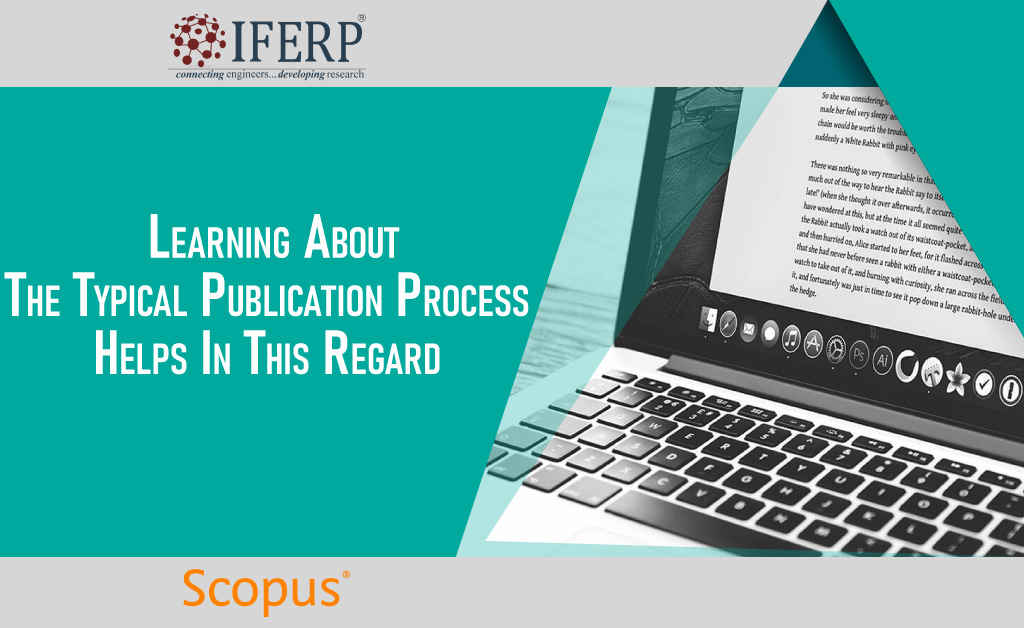Submitting a manuscript to a bad journal is one of the most common mistakes made by early-career and senior researchers. Novice researchers exploring broader research topics are sometimes unfamiliar with reputable journals in their field. Senior researchers, on the other hand, feel too comfortable with publishing in the same Scopus indexed journals over and over again, even when they can now find better publishing opportunities and reach a wider audience through open access journals or only electronic ones. So, whatever stage of your career you might be in, the question of how to go about choosing the right scientific journal or academic publication for your particular stream of research will always arise. The metrics you need to consider may change over time, with advancements in technology altering how journals work, but the below-listed points will remain the same, more or less.

- Finding A Journal That Fits Your Specific Niche The Best
- Even remarkable, high-impact work can be rejected when the research topic is outside the scope of the journal.
- This can lead to the unnecessary waste of time which could very well be avoided in the first place if the authors take the time to study the objectives and scope of the journal, which are often readily available on the journal’s website.
- Going through the website can help authors understand if the journal is a good fit for them.
- Sometimes journals may also mention certain types of research that are not accepted, for instance, a journal which deals with child psychology will not accept a research paper based on an adult psychology topic although they are both psychology related.
- Those authors that have doubts about a journal’s objectives even after reading about what its goal and scope is should go ahead and browse through the –
- summaries,
- table of contents, or
- even read a few full articles (provided they can access them) of the journal.
- Doing so will offer them a better idea about whether the journal is the right choice for them.
- Perusing Through The Guidelines Provided By The Journal
- Every journal offers specific instructions on things such as the journal’s –
- preferred style of formatting,
- word limits for every section (including and excluding bibliographic information),
- referencing style, etc.
- Submitting to a journal that doesn’t accept your article type is a guaranteed way to get your article rejected.
- For instance, certain journals do not accept case reports.
- If the journal charges fees for submitting or processing articles, you will also find them in this section.
- Availing For The Services Of A Professional Writer If Need Be
- It is crucial that the research also be readable and well written.
- Authors who aren’t confident of their writing abilities are advised to seek the assistance of professional academic publishing services, to ensure that their manuscript meets global publishing standards.
- Most researchers prescreen journals only when they have finished writing their manuscript.
- It is easy to understand why this might not be the most suitable approach.
- Imagine reducing the number of words of your research paper by half, or reducing referrals after you’ve finished working on your manuscript, to suit the requirements of a journal.
- Reformatting an entire research paper after it’s been completed isn’t fun.
- Keeping the specifications of a journal in mind when writing will save you a lot of time and unnecessary stress towards the end.
- Also, having a target journal in mind will increase your chances of acceptance as you will now have more clarity on –
- the target audience of the journal you are interested in having your paper published in,
- the purpose of your research paper, and
- the context of the paper that you’re writing.
- Every journal offers specific instructions on things such as the journal’s –
- Time Taken By A Journal To Publish Manuscripts After Accepting Them
- Ideally, journals must be as accountable to authors as authors are to journals.
- This is however not the case, as there are many research authors who have undergone the experience of having no idea of the status of the manuscripts that they had submitted over a year ago.
- Unfortunately, the stories of time wasted by submitting manuscripts to below-par, predatory journals aren’t anything new.
- Even the slightest delays in the publication of a research paper are capable of slowing down one’s career progression.
- Good journals take at least four months to get back to authors with a response if their article has been sent for peer review.
- If their article was rejected, they should hear about it within a month or six weeks of submission.
- Reputable journals work hard to publish articles within nine months to a year of submission.
- But top-tier newspapers have longer wait times, mainly because of the volume of submissions they receive, and their rejection rates being higher as well.
- Nevertheless, you must be wondering how many issues are published each year by a journal.
- The more they publish, the less time it will take for them to publish your article.
- This is why it’s important to keep an eye out for ‘call for papers’ for special editions, applying to which you’re article/paper might be published quicker.
- Special editions receive relatively fewer submissions and make it easier to review and publish your article if it meets the criteria.
- As an early-career researcher, you might have panicked when you learned that it can take six months to a year to get a manuscript published.
- But it is above all the lack of understanding of how journals work that makes it difficult to imagine how the publication of an article can take so long.
- Understanding exactly how a journal’s publication process works will stand you in good stead.
- Learning About The Typical Publication Process Helps In This Regard
- When you submit an article, it is usually read by an initial writer, who then assigns an associate writer who is familiar with the stream of research that you are dealing with.
- This editor then proceeds to find at least two peer reviewers who agree to provide their opinion on your article within the allotted time, which takes roughly about a month or two.
- In many cases, reviewers cannot return to the journal on time, which delays the process.
- After receiving the reviews on your article, the associate editor must then make a decision about your article.
- If your article is rejected, you will have to start looking out for another journal to apply to.
- Otherwise, the publisher could return the article with the recommended revisions, which may take an additional three months.
- Once you submit the article with the changes, it will be sent back to the editor for review, and then take a few more weeks for the review to be completed.
- The paper is then copied, sent back to you for author review, and composed before publication, online, or in print.
- Any journal that claims to be able to publish your article in anything less than two months is most likely a fraudulent journal.
- IFERP conferences offer significant insight on the publication processes followed by many of the best journals in the world.

- Paying Attention To The Journal’s Influence By Verifying Its Impact Factor
- A journal’s impact factor basically indicates the number of citations received by journal articles in proportion to the number of citation articles published within the last two to five years.
- It has become the default measure for evaluating the reputability and quality of a journal and everyone from –
- authors,
- institutions,
- research bodies & organization, and
- employers,
- looks out for this value when evaluating the standard of a journal.
- Obtaining lucrative job offers, grants for conducting further research, and other benefits, becomes much easier when you are an author published in a journal with a high impact factor.
- It is advised that as soon as you get a list of journal and publications that you’re interested in having your work published in, the first thing you do is to sort them out as per their impact factor values.
- Watch Out! Don’t Be Blinded By A Journal’s High Impact Factor Value
- It might seem tempting to choose the journal with the highest impact factor value, but you need to objectively assess your article to determine if it really has the potential to be published in a top journal.
- This is especially important because since publishing ethics require authors to send their manuscripts only to only a single journal at a time, submitting to a journal with a lower probability of acceptance is a risky proposition.
- Authors end up wasting a lot of valuable time waiting for a response, and resending it to other journals in different formats may take even longer.
- Besides JIF and asking senior scholars for recommendations, you can also consult with editorial board members or journal sponsorship to assess its credibility and reputation.
- Prestigious journals often have eminent researchers in their field as members of the editorial board. If the journal editors are unrelated to the type of work you are working on, perhaps think twice before submitting your article.
- The Process Of Peer Reviewing
- The entire exercise of peer reviewing is to validate the written investigation findings of a group of authors for –
- their relevance,
- their novelty, as well as,
- their accuracy.
- These peer reviewers usually don’t belong to the editorial staff of a journal and are normally not even paid for their opinion.
- Any misleading or unproven results are thus removed during this process.
- A quality peer-review process makes your articles stronger by pointing out gaps in your conclusions that might require further explanation.
- Reviewers offer comments to make your article easier to read and how you can make it more useful to add value to other already published works within your discipline.
- The end goal of a peer review process is to decide whether the results of a manuscript are worth publishing.
- The final responsibility for this process rests with the journal editor, who may choose to accept or disagree with the reviewer’s comments.
- It is because of this rigorous publishing process that peer-reviewed journals demand greater respect in the world of academia and should be one of the most important things to consider when choosing a journal.
- To know more about why the peer-review process is integral to academic publishing take part in any upcoming conference 2023 organized by IFERP.
- The entire exercise of peer reviewing is to validate the written investigation findings of a group of authors for –
- Verifying If The Journal You Are Looking Into Is Indexed By A Popular Journal Indexing Database
- The databases that index journals take into account several factors such as –
- the regularity of publication,
- its review process,
- the quality of articles typically published,
- the reputation of the journal, etc.
- Well-indexed journals are therefore considered more prestigious, as are journals with high impact factor values.
- Indexed journals (such as a SCOPUS publication) greatly improve the visibility of your research and therefore also the number of citations of your article.
- In the highly competitive academic landscape that exists today, having your work published in print-only journals can seriously limit its visibility.
- The databases that index journals take into account several factors such as –
- Find Out More About The Acceptance Rate Of Every Journal You Are Interested In Applying To
- As it may seem obvious, reviews with lower acceptance rates are seen as more prestigious and deserving.
- Even a rejection rate of ninety percent is not uncommon for leading journals, while a rejection rate of around fifty percent is the norm for mid-level ones. However, it’s not easy to find out what the acceptance rate of an individual journal is.
- As with impact factors, no industry standard for calculating journal acceptance rates exists. Accordingly, each journal follows the approach it deems appropriate.
- While some journals consider the total number of manuscripts they have received as the basis for estimating this value, others consider the manuscripts they have sent for peer review to do so.
- There are also logs that do not keep accurate data records for this purpose and only offer a rough estimate.
- Additionally, for highly specialized fields, if the number of researchers contributing to the field is low enough, journal acceptance rates tend to be higher. Sometimes the acceptance rates of a journal can also vary depending on the types of manuscripts.
- Case reports, for instance, have high rates of rejection, while acceptance rates for research papers can be quite alright.
- A lot of journals these days have started to mention their acceptance rates on their websites.
- Taking Advantage Of Modern Journal Identification Tools To Make Things Easier For Yourself
- With countless journal choices to choose from, the number of tools available to find the right journal has also multiplied over the years.
- While some tools help with the initial screening of journals within your specific stream of research, there are other tools that also provide more granular information or data points that help immensely when it comes to choosing the best journal, such as –
- the acceptance rate of a journal,
- the quality of the journal’s peer-review process,
- the typical duration of a journal’s publication process,
- the journal’s impact factor, etc.
- If you aren’t aware of any such tools or how to use them, then you should register yourself for any international conference 2023 organized by IFERP.



One comment
Comments are closed.